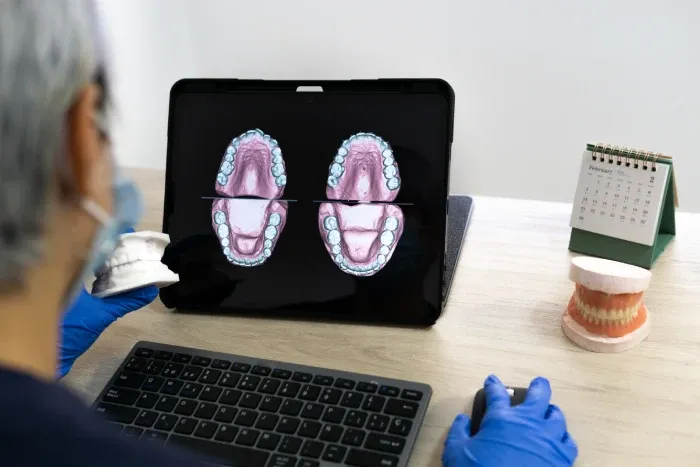Digital dentistry is a method that enhances dental treatment processes by utilizing technology for greater precision, speed, and efficiency. Tools such as digital scanners and digital X-rays are used, allowing intraoral digital scans to create treatment plans, produce dental restorations quickly, and make treatment processes more comfortable.
Applications of Digital Dentistry

Digital dentistry encompasses various applications, including intraoral scans, 3D modeling, and the design and production of dental restorations using CAD/CAM technology. It also involves obtaining clearer images through digital X-rays and providing high accuracy in delicate procedures such as implant placement.
What Is Digital Dentistry? How Does It Differ from Traditional Methods?
Digital dentistry is an approach that applies dental treatments with greater precision and efficiency using technology and digital devices. Unlike traditional dentistry, it allows for the rapid scanning and analysis of a patient’s oral structure in a digital environment. This makes the treatment process faster, more accurate, and more patient-friendly. Advanced technological tools such as digital scanners, 3D modeling, and computer-aided design (CAD) systems enable less invasive and more effective treatment methods.
What Are the Applications of Digital Dentistry?
- Digital Scanning and 3D Modeling: High-precision digital models can be obtained quickly and comfortably.
- Computer-Aided Design and Manufacturing (CAD/CAM): Dentists can create faster and more customized treatment plans using digitally designed and manufactured dental restorations such as crowns, bridges, and veneers.
- Digital X-rays: Digital X-rays provide clear images of the teeth, jaw structure, and oral cavity with lower radiation exposure.
- Implant Planning: Software and scanners optimize the implant placement process by ensuring greater accuracy in dental implant positioning.
What Are the Advantages of Digital Dentistry? How Does It Benefit Patients?
- Speed and Efficiency: Digital systems reduce treatment times. For example, restorations can be designed and produced within hours using digital scans and CAD/CAM technology.
- Less Discomfort: Compared to traditional impression-taking methods, digital scans are more comfortable and less invasive for patients.
- High Precision and Accuracy: Digital systems provide highly detailed and precise data, making treatments more effective.
- Lower Radiation Exposure: Digital X-rays use less radiation than traditional X-rays, enhancing patient safety.
- Long-Term Tracking and Storage: Digital data can be easily stored and accessed even years later.
Digital dentistry offers a significant innovation in modern dental treatments, improving speed, accuracy, and patient satisfaction.
For more detailed information about dental treatments, visit our blog page or click the link to find the most suitable dental clinic for you. To learn more about oral health, read our article "Pediatric Dentistry."